January 12, 2021
Nootropics are being discussed, studied, and used now more than ever—particularly among those in the biohacking space, but also increasingly by mainstream folks looking for a little bit of help from science to optimize studying and learning for school, get ahead at the office, or simply to take their focus, memory, and cognition to the next level.
Heck, I'm no stranger to nootropics myself, a topic I've covered extensively in past podcasts and articles such as:
- Limitless & Lucy – Your Ultimate, Done-For-You Guide To Nootropics, Smart Drugs & Psychedelics.
- Smart Drugs, Nootropics, Microdosing With Psychedelics, Enhancing Deep Sleep, Rites Of Passage & Much More With Kyle Kingsbury Of Onnit.
- Healthy Drinking 101: How To Make Feel-Good, Alcohol-Free Cocktails Chock Full Of Nootropics, Adaptogens & Botanicals!
- 42 Different Ways To Build A Better Brain, The Problem With Modern Smart Drugs, Hacking Your Neurons & More.
- Fitness, Biohacking, Smart Drug & Supplement Secrets Of One Of The Fastest Growing Sports On The Face Of The Planet.
- How to Make Your Own Smart Drugs, Natural Nootropic Stacks, My Brain-Enhancing Compounds of Choice & Much More!.
- Does A “God Pill” Exist?
- And more.
So, when I recently discovered a nootropics masterclass from the company Ergogenic Health (use code BEN to save 10% on the cosmetics nootropics class) and learned from them all sorts of fascinating bits of information about neurotransmitters—including a common fruit that enhances the effects of psychedelics; a simple free activity you can do anytime to significantly lower cortisol; how a certain way you brush your teeth could reduce intelligence; a unique form of vitamin B1 that increases exercise performance, motivation, mood, and overall energy; how capsicum from peppers can lead to anxiety; and the effects a little-known “younger sister of curcumin” can have on dopamine and noradrenaline; and many other little-known brain-boosting protocols—I just had to get in touch with the man behind the masterclass and Ergogenic Health… biohacker, nootropics expert, and host of the Boost Your Biology Podcast, Lucas Aoun.
By the way, stay tuned for this Saturday's podcast with Lucas, entitled, “Advanced Smart Drugs & Nootropics You’ve Never Heard Of, Rare Japanese Seaweed For Sleep Enhancement, The Most Powerful Form Of Vitamin B1 That Exists & Much More!” to learn about everything you just read, as well as everything you're about to read in today's article.
In today's article, a guest post by Lucas, you'll discover a brief history of nootropics, polished insights about how nootropics can be utilized to enhance your quality of life, some exciting underground nootropics that have yet to hit the mainstream, and the most important facets to understand when dabbling with these brain-enhancing compounds.
The History of Nootropics
Nootropics are compounds that increase mental functions, including motivation, memory, concentration, attention, and other aspects of executive functioning.
The name nootropic is derived from Greek words for mind (νουσ) and bend, or turn (τρɛπɛιν). Nootropics can be either naturally derived or synthetically made. Regardless of where they come from, there is a very strict criterion in order for a substance to be classified as a true nootropic. This criterion requires that the substance exhibits the following:
- Enhancement of learning acquisition;
- Resistance to impairing agents;
- Facilitation of interhemispheric transfer of information;
- Enhanced resistance to brain “aggressions”;
- Increased tonic, cortico-subcortical “control”; and
- Absence of usual pharmacological effects of neuro-psychotropic drugs.
The esteemed psychologist, chemist, and pharmacologist, Dr. Corneliu Giurgea, first conceptualized the class of compounds now known as nootropics in the 1960s when he was investigating the possibility of improving and initiating sleep cycles through interaction with GABA, a newly discovered inhibitory neurotransmitter. GABA is one of the neurotransmitters that alcohol binds to that causes a state of relaxation and reduces anxiety. We'll come back to this later.
Anyhow, back to Dr. Giurgea’s work. He wound up synthesizing a compound called piracetam, which interacted with the cholinergic system to promote memory and learning ability. This was regarded as one of the earliest discovered nootropics. Piracetam is now commonly used by nootropic users all around the globe. You can learn more about it in Ben's article “Limitless & Lucy – Your Ultimate, Done-For-You Guide To Nootropics, Smart Drugs & Psychedelics.”
It is noteworthy to highlight the difference between nootropics and “smart drugs”—two terms that are often (incorrectly) used interchangeably. Smart drugs do not meet the full requirements as defined above. For example, although some prescription-grade medications used to treat ADHD are often used off-label for “nootropic” purposes, these are not technically classified as nootropics due to their ability to promote neuronal damage, reduced brain plasticity, and possible excitotoxicity.
Despite nootropics only being conceptualized some 60 years ago, the desire to augment cognitive performance through the consumption of particular substances predates antiquity. Many authors support the co-evolution of early hominins with the use of nootropic substances and the attainment of altered states of consciousness. There is also evidence to support the long-standing and widespread use of nootropic agents on every inhabited continent. For example, Aboriginal Australians have used the stimulatory effects of Nicotiani gossei (rich in nicotine!) for millennia.
Understanding Your Neurotransmitters
The most critical point to understand when entering into the realm of experimenting with nootropics is to have a firm grasp on the functions of a variety of neurotransmitters.
Once you understand some of these common neurotransmitters (sometimes referred to as your body's chemical messengers), you can then merge modern science with nootropics to take control of the way you think, feel, and perform.

A perfect example of how this relates to everyday life is making the choice to drink coffee to energize your body and mind after a sleepless night, or utilizing exogenous ketones to fuel your brain if you anticipate needing to function without food for six hours because you’re at a special event. You are choosing to invoke a specific state of mind to accommodate your environmental needs or a particular task at hand. Whether you know it or not, performing certain activities such as yoga and meditation, partaking in social gatherings with friends and family, or simply experiencing the act of falling in love are all forms of “hacking” your neurotransmitters.

So, how are neurotransmitters made?
Using dopamine as an example below, you can see how dopamine is released at the end of dopamine-producing nerve cells by the arrival of a nerve impulse. Then, it is diffused across the synapse or junction, causing the transfer of the impulse to another nerve fiber, a muscle fiber, or some other structure (dopamine-receiving nerve cells).
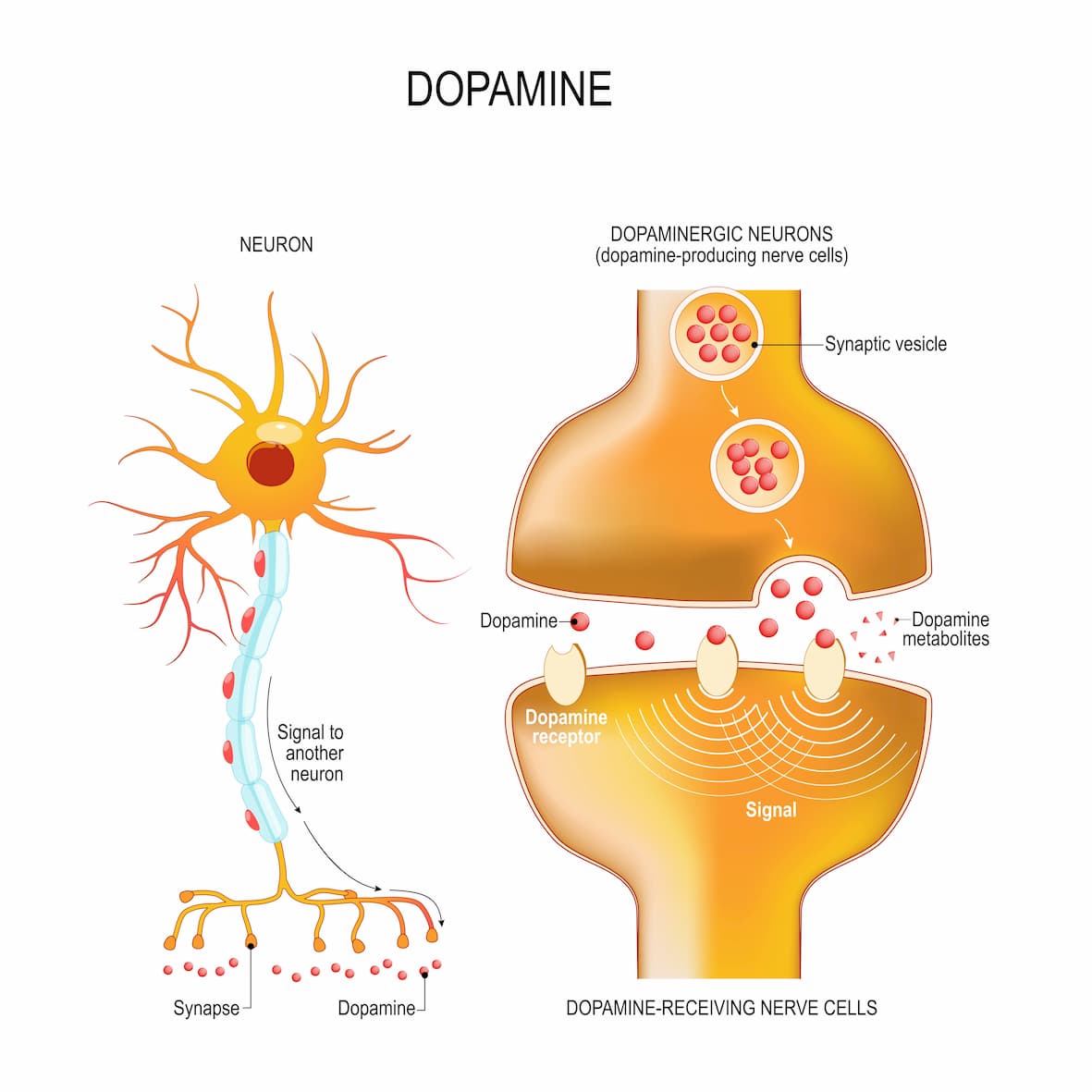
Take tryptophan as another example. Have you noticed a variety of supplements that are designed to help you fall asleep and stay asleep include the amino acid “L-tryptophan?” Well, this is basic amino acid therapy. You see, these amino acids can be used in isolation to enhance a particular pathway in your body/brain. As you can see below, tryptophan is the building block to create serotonin. How does this affect sleep? Serotonin is the precursor to the master sleep hormone—you guessed it—melatonin.
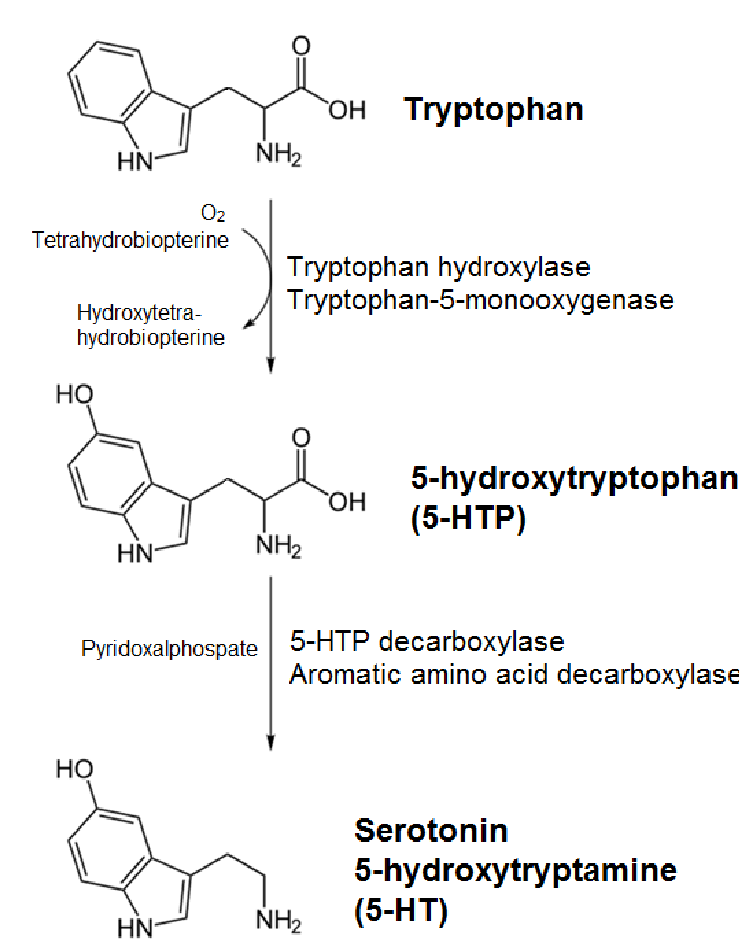
Encapsulating on a similar concept, the same applies with histamine. You may associate histamine with sneezing, a runny nose, or itchy eyes; but beyond allergies, histamine is actually your brain’s primary wakefulness-promoting neurotransmitter, the precursor to which is the amino acid L-histidine.
A key amino acid, L-Histidine has been demonstrated to possess some rather unique nootropic-like effects in supplementation form. The effect of L-histidine on mental fatigue and cognitive performance in subjects with high fatigue and sleep disruption score was reviewed. After two weeks of histidine ingestion at 1,650 mg per day, reaction time for working memory tasks was significantly shortened compared to placebo. Additionally, scores for clear thinking and for attentiveness were increased significantly following histidine ingestion compared to placebo ingestion. These results suggest that daily ingestion of histidine may ameliorate feelings of fatigue, increase performance during working memory tasks, and improve clear thinking and attentiveness.
Off Label (Ab)use Drugs Vs. Real Nootropics
Before we dive into some of my favorite, newly emerging nootropics, it's important to revisit the dangers of meddling with “smart drugs” or off-label use of prescription drugs for cognitive enhancement.
For example, while one recent qualitative study showed that Ritalin (methylphenidate) and Adderall (dextroamphetamine and amphetamine) affect intellectual capacities (such as executive functions, working memory, and information process), they also heavily affect the user’s emotional states in a negative manner. Another recent study on medical students using methylphenidate revealed minimal knowledge of its mechanisms and side effects, with no cognitive benefits reported aside from prolonged arousal.
On the contrary, a naturally occurring nootropic compound, choline, was put to test in a placebo-controlled, double-blind study that analyzed whether it could improve visuomotor performance after ingestion. Researchers discovered that choline administration improved visuomotor performance and decreased the pupil size of healthy humans. This was the first evidence to demonstrate a rapid change in the nervous system and behavior after choline ingestion, pointing at choline’s wide-ranging effects on cognition.
Furthermore, choline, a selective agonist at α7 receptors, is increased with oral administration of cytidine 5′-diphosphocholine (CDP-choline). In one study, behavioral performance in schizophrenia-relevant cognitive domains of 24 healthy volunteers was assessed following a single low (500 mg) and moderate (1,000 mg) dose of CDP-choline. Relative to placebo, CDP-choline improved processing speed, working memory, verbal learning, verbal memory, and executive function in low baseline performers, while exerting no effects in medium baseline performers.
Finally, you are probably already familiar with the highly controversial drug modafinil, as Ben has covered it extensively in the following podcasts and articles:
- Modafinil: Is This Wildly Popular Smart Drug Safe And Effective? (& What It Can Do For Your Sleep Cycles & Brain Health).
- Limitless & Lucy – Your Ultimate, Done-For-You Guide To Nootropics, Smart Drugs & Psychedelics.
- CBD vs. THC For Sleep, Microdosing Psilocybin, Can You Overdo Modafinil, How To Re-Program Your Body Language & Much More With Jordan Harbinger.
- The Little Known Truth About Smart Drugs And Nootropics (Audio & Article)
Modafinil was developed to fight narcolepsy, a condition in which people experience microsleep episodes during the day. In fact, modafinil is widely (ab)used by millions around the globe to increase alertness and wakefulness following sleep deprivation. You see, the major drawback with modafinil is tolerance, dependency, and basically feeling like shi* without it. A drug like this steals from your future and can leave you feeling extremely depressed and depleted for days after usage.
So, what’s the solution?
4 Underground True Nootropics
Irdabisant (the “New Modafinil”), bromantane (the “Russian Military Grade Nootropic”), thiamine tetrahydrofurfuryl disulfide (dopamine-enhancing B-vitamin), and 9-methyl-β-carboline (the “Ayahuasca-influenced Nootropic”) are four underground, but highly effective, nootropics that I predict will be making quite the splash in the “neurotransmitter-hacking” world very soon.
Stay tuned for the upcoming podcast, “Advanced Smart Drugs & Nootropics You've Never Heard Of, Rare Japanese Seaweed For Sleep Enhancement, The Most Powerful Form Of Vitamin B1 That Exists & Much More!” for more on each of these exciting new compounds.
Without further ado, here they are:
1. Irdabisant (CEP-26401)
This compound is a potent and selective histamine H₃ receptor antagonist/inverse agonist (which actually increases histamine) with cognition-enhancing and wake-promoting activities. CEP-26401 is currently in phase I clinical development at Cephalon for improving cognition in Alzheimer’s disease patients and for the treatment of schizophrenia. In one study, CEP‐26401 induced energizing, relaxed, and happy feelings in healthy volunteers and a dose‐related improvement of tests measuring attention, reaction time, and alertness. Following single-dose administration, a dose-related awakening effect was observed, consistent with the pharmacology of H3 antagonists. CEP-26401 also improved performance in the rat social recognition model of short-term memory using oral doses of 0.01 to 0.1 mg/kg and was wake-promoting at 3 to 30 mg/kg. These results demonstrate potent behavioral effects of CEP-26401 in rodent models and suggest that this novel H3R antagonist may have therapeutic utility in the treatment of cognitive and attentional disorders. You can learn more about CEP-26401 in this video:
Note on sourcing: This compound is very difficult to source. However, if you are interested, we are currently working on partnering up with another company to establish global distribution. You can inquire at [email protected].
2. Bromantane (Ladasten)
Bromantane is a drug that improves aspects of mental weakness and laziness. If you are someone who procrastinates or finds it hard to start tasks, bromantane can help you. It may help relieve fatigue and anxiety, improve learning, and help with physical activity. Bromantane improves productivity, vigilance, and motor performance (movement and coordination), libido, focus, and overall mood. It is non-addictive, non-habit-forming, and its effects remain for many months after stopping use. This is possible because bromantane upregulates the enzymes in the brain that create dopamine—specifically, the enzyme tyrosine hydroxylase. Tyrosine is an amino acid found in protein-rich foods, and once it enters your brain, it undergoes conversion into dopamine, the “motivation chemical.” Bromantane is an actoprotector (synthetic adaptogen), which is a type of drug that enhances physical activity under extreme environmental conditions (low oxygen, high temperature, etc.). In a month-long study of 728 asthenia patients, 50 and 100 mg doses of bromantane helped reduce neurasthenia symptoms and improved their sleep. It also improved the patients’ quality of life, and only 3% of the patients experienced minor side effects. You can learn more about bromantane in this video:
A word of caution on Bromantane: This drug is associated with limited side effects and is banned by WADA due to its performance-enhancing abilities.
3. Thiamine tetrahydrofurfuryl disulfide (TTFD)
If you take a B complex, read the first ingredient on the panel. It will likely be “vitamin B1 as thiamine HCL.” This was the very first B-vitamin ever discovered, and it plays a crucial role in carbohydrate metabolism and energy production in your body. Thiamine tetrahydrofurfuryl disulfide (TTFD) is another form of vitamin B1 that has a powerful ability to cross the blood-brain barrier and increase brain energy levels, dopamine activity, alertness, and memory. It is the synthetic counterpart of allithiamine, which naturally occurs in garlic. The supplement Thiamax, which contains highly bioavailable TTFD, has been shown to cross the blood-brain-barrier and can bypass normal routes of thiamine absorption, resulting in a higher rate of uptake both in the gut and at the cellular level. You're probably wondering… What makes this an underground nootropic? The answer to that lies in its unique effect on dopamine neurons. Thiamine tetrahydrofurfuryl disulfide has been shown to promote voluntary activity through dopaminergic activation in the medial prefrontal cortex (MPFC). Motivated behaviors—including locomotion, feeding, glucose seeking, and learning and memory—are regulated by the dopaminergic neurons. Amphetamine (AMPH) injection induces dose-dependent dopamine release in the MPFC and increases voluntary locomotor activity through the dopamine D1 receptor in rats. These data suggest that dopaminergic neurons in the MPFC are a potential target of agents that induce motivation for physical activity. What makes TTFD unique is that although we must be careful of addiction induced by drugs such as AMPH, TTFD is a potential agent for the activation of dopamine neurons without severe side effects. You can learn more about TTFD in this video:
4. 9-methyl-β-carboline (9-MBC)
9-methyl-β-carboline is a hot new compound right now in the psychonaut (altered states of consciousness) space—and for good reason. But before we dive in, you need to understand a little about Ayahuasca. (Remember, 9-MBC is known as the “Ayahuasca-Influenced Nootropic.”) Ayahuasca is a brew that is typically comprised of one-half Psychotria viridis shrub and one half Banisteriopsis caapi vine, the latter of which includes three harmala alkaloids called harmine, harmaline, and tetrahydro-harmine, as well as the harmine metabolite harmol. Harmine and harmaline behave as monoamine-oxidase reversible inhibitors, whereas tetrahydro-harmine inhibits serotonin reuptake. These alkaloids were shown to stimulate neural stem cell proliferation, migration, and differentiation in adult neurons, which suggests that modulation of brain plasticity could be a major contribution to the antidepressant effects of ayahuasca. Additionally, harmaline and harmine possess a variety of biological properties, including acetylcholinesterase (AChE) inhibitory activity, antioxidant, anti-inflammatory, and many others, and have great potential for treating Alzheimer’s disease. If your interest has been piqued by ayahuasca, you can learn more about it in Ben's podcast here.
Now, back to 9-MBC and how it fits in with all of this…
9-methyl-β-carboline exhibits multimodal effects that could be beneficial in the treatment of Parkinson's disease. It shows stimulatory effects to dopaminergic neurons by increasing the expression of tyrosine hydroxylase (same as bromantane mentioned above) and its transcription factors in pre-existing dopa decarboxylase immunoreactive neurons.

Furthermore, 9-MBC has emerged as a substance with the rare property of a protective and regenerative/restorative potential for dopaminergic neurons by inducing gene expression of several neurotrophic factors and decreasing apoptotic cell signals. It reduces protein levels of α-synuclein and inhibits monoamine oxidase A (MAOA) and monoamine oxidase B (MAOB). If you're unfamiliar with MAOA and MAOB—essentially, monoamine oxidase is involved in removing the neurotransmitters norepinephrine, serotonin, and dopamine from your brain. Finally, 9-MBC acts on multiple targets in the inflammatory cascade by inhibiting the proliferation of microglia, decreasing chemotactic cytokines, and creating an anti-inflammatory environment in the central nervous system.
It has been shown to…
- Up-regulate, differentiate, and protect dopaminergic neurons, dendrites and synapses, especially in the substantia nigra of the midbrain and in the hippocampus.
- Increase dopamine synthesis, unlike caffeine and other stimulants, which deplete dopamine through excessive release and firing.
- Increase neurotrophins/neurotrophic factors (NGF, BDNF, CDNF, GDNF, SHH) and decrease apoptotic signals like caspase-3. These can significantly enhance executive functioning, alertness, and motivation.
- Increase/protect/recover the NADH dehydrogenase (or “complex I” which catalyzes the transfer of electrons between NADH and Co-Q10), enhancing the mitochondrial respiratory chain.
You can learn more about 9-MBC here:
Summary
So there you have it, my psychonaut friends! Sure, you can take control of how you feel on a day to day basis by practicing gratitude, meditating, and eating well—but to dramatically influence your neurochemistry on a supremely powerful level, nothing beats harnessing the power of nootropics and cosmetic neurology to operate at your peak potential.
To learn even more, and discover what I mean by “cosmetic neurology,” you can sign up here for the Ergogenic Health “Cosmetic Neurology” Masterclass and save 10% with code BENG10. In it, you'll discover:
- How to understand your brain chemicals with a logical and scientific explanation of various neurotransmitters…
- An integrative breakdown on the most advanced nootropics and compounds to increase alertness, focus, and attention…
- Which nootropics scientifically support long-term and short-term memory…
- Nootropics that can be used to replace alcohol, providing you with that social lubrication and confidence you’re seeking…
- Nootropics and compounds for enhancing your exercise regime and performance…
- Which nootropics you should be extremely cautious of…
- And much more!
As a part of the masterclass, you can also get the Nootropics Vendor Black Book, which breaks down some of the world-class manufacturers and vendors for each of the nootropics you'll learn about.
I'll leave you with one word of caution: More is not better when it comes to nootropics. The most important aspect of harnessing the power of nootropics is to build a high level of self-awareness to fully comprehend and appreciate each compound for its benefits and drawbacks. Remember, no one knows your body better than you do.
If you have any questions, comments, or thoughts about nootropics, drop them below, and I'll respond!


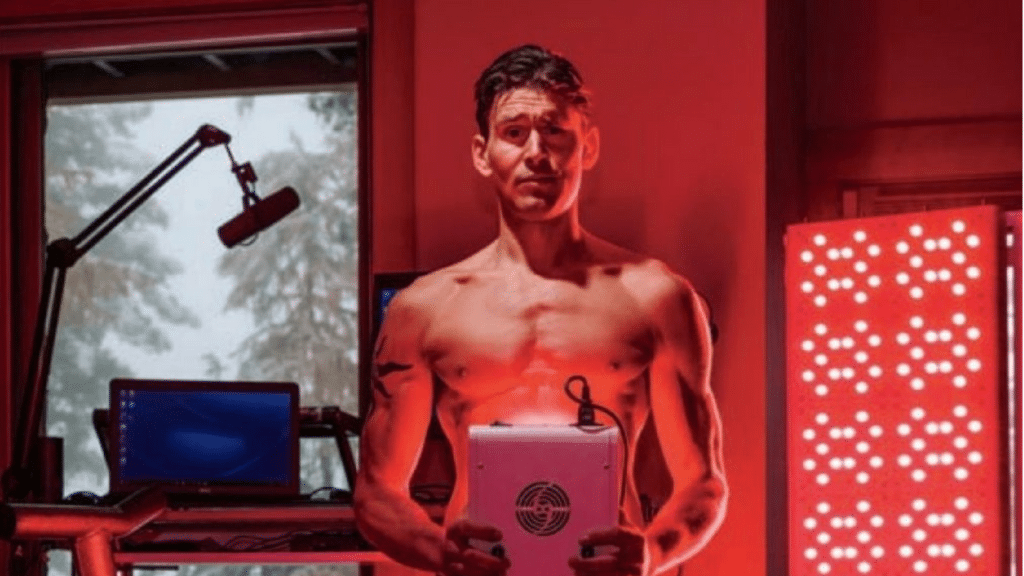

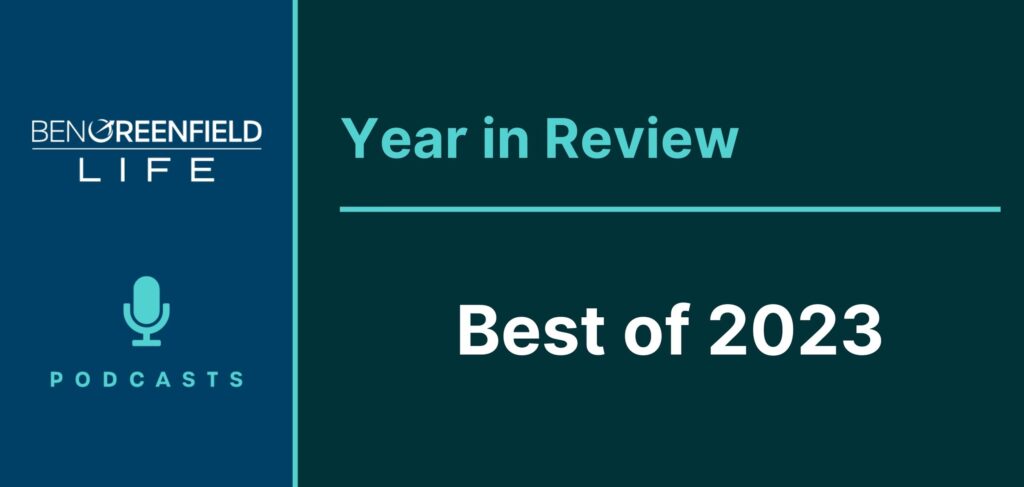




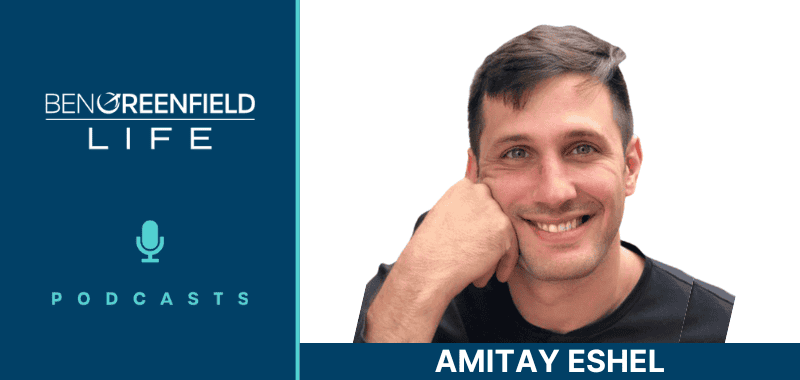
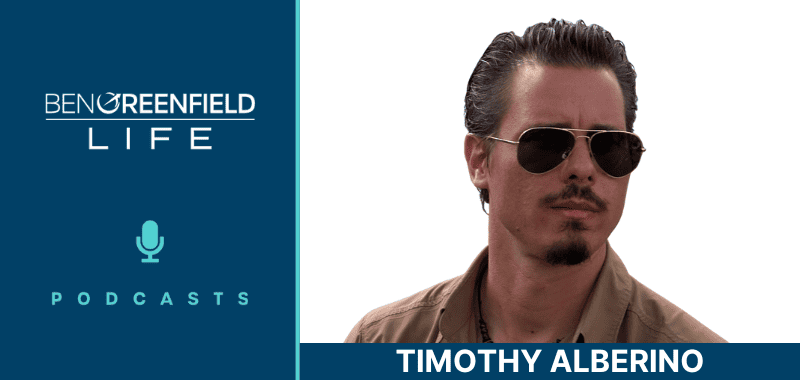



Well done! articles like this help us open our minds to alternative solutions for needs that traditional medicine can cover but leave a bad trace.
Hi Ben and Lucas,
What recommendations do you have post-concussion symptoms? Challenges with vision/depth perception, headaches after too much screen/light stimulation, etc. Undergoing CBT and vision-specific therapy at the moment. Thanks!
Hello Ben,
Thank you for the great article ! Is there a nootropic you would particularly recommend for early dementia onset for an elderly person (to promote memory and motricity) ?
Thank you !
What would you recommend as an affordable stack for getting into a meditative “flow” state? Also, what kind of stack for improving motor function/coordination for sports, that could be gotten on Amazon?
What are your thoughts on using nootropics before full brain development has finished? Especially for people age 18-22?
The article has a valuable content, which has helped me a lot in understanding health and medical . I think if anyone wants to become expert in Blog Niche, then he needs to read your content consistently.
A while ago I was sharing my knowledge in a “Student Biohacks” reddit thread
https://www.reddit.com/r/Biohackers/comments/iugxy3/student_biohacks/g637uus/?context=8&depth=9
This was super interesting. I was wondering if any of the 4 “underground” nootropics are GRAS certified by the FDA?
Yo Daniel,
Lucas here, the author of the article.
None of these compounds have GRAS status by the FDA. They are too niche.
Thank you, I learned something new, I am life long stutter and disfluency. There is no medicine – Drs no nothing and they tell speech therapy bla bla. Nothing works. I know there is something in this brain chemicals. I would be forever grateful to you if you can guide me with Nootropics to trick my brain for better and fluent speech.
Your Forever fan!
Hi Dev. My daughter had a bad stutter and no speech therapy sessions worked after 2 yrs of effort. On a stretch, we tried hypnosis, and on the very first session she largely stopped stuttering. I know ever person if different and I am very empathetic to your challenge (and likely you tried this already) but thought I’d throw it out there.
Hi Dave, Thanks for your empathy, I appreciate you taking time to help someone, God bless you every way! I am more interested to learn what hypnosis techniques your daughter practicing and if I can get contact of the referral of hypnosis therapist.
I guessing Ben or Lucas (author of article) don’t know about which brain chemical is impacting on fluency of speech.
Listen to the Paul Stamets story, he was a big stutterer, psilocybin mushrooms “fixed” it for him.
om
Thanks Don for info, will check it out. Grateful to you!
excellent article. What nootropic do you recommend to treat panic attacks due to stress?
Thanks Gerado,
Some nootropics that have worked well for me to manage panic attacks/stress have been ones that focus on the GABAergic system and reduce HPA Hyper-reactivity. You can learn more in the course that Ben spoke about here: https://bengreenfieldfitness.com/cosmeticneurology
I love that you’re talking about nootropics! I avidly watch the Cortex Labs guy break down stack methodology and such, and since implementing the stuff has changed my business. Just got my hands on 9MEBC. Excited to give it a whirl
Was impressed with the nootropics from the links in the article and was ready to checkout on their website until I saw that they required a 10% credit card fee and warned of an additional cross border fee because their processing bank is in South Africa. Their other payment alternatives are crypto’s and two e check companies that I’m unfamiliar with. I would very much like to be a customer, but the safety alarms are going off at the moment and they are louder than the products I really want to buy. Very disappointing.
yep, welcome to the world of better living through science. Most consumers don't know/want this stuff so getting it is tricky. :)
I’ve used checkbook.io with no problems, and they seem to be reputable with actual partnerships with major banks for payment gateway integration.
I suggest looking for products at Science.Bio and Nootropics Depot. These are arguably the two most reputable companies that produce nootropics.
I need something that is easy to find and cheap for studying and memory. L-tyrosine?
L- Theanine works well when taken with caffeine. With a cup of coffee for example.
Thanks!
Hey Marion,
Lucas here, the author of the article…
Uridine monophosphate with B-vitamins is a good starting point from my experience. You can learn more in my free nootropics course here: https://www.ergogenic.health/masterclass/nootropics-free
Hi Lucas!
Thank you for the information. I will experiment with a couple of the stacks in the free course, particularly the one for motivation which includes the Uridine monophosphate. The social anxiety stack looks useful for presentation days, too.
Thank you again.
Ben…I’ve been fascinated by nootropics for quite a while. I’ve read where they’re quite popular among tech billionaires on the American West Coast.
What do you know about Emsam (Deprenyl)
transdermal patches, generically known as Selegiline, quite popular among European longevity aficionados? It can be obtained by Rx only and is quite expensive. I tried the patches for a while, wherein I experienced unprecedented clarity, mood elevation, and energy.
Thanks in advance for your response.
Hey Turner,
Lucas here, the author of the article above.
Selegeline is quite powerful, and is a selective, irreversible inhibitor of monoamine oxidase B (MAO-B).
There are many users who respond favourably to other natural MAO-B inhibitors such as Cordyceps and Cistanche extract.
Hi Lucas,
I’ve been watching many of your YouTube videos.
I’m building a stack to increase mental energy, dopamine and testosterone.
Looks like DL-Phenylalanine is a good start for dopamine.
Kutaj as an H3 receptor antagonist should do well for mental energy
You say that Cistanche can increase dopamine and that its a MAO-B inhibitor.
(I’ll do some research on MAO-B inhibitors since I’m not familiar with them.)
Q1) Is cistanche an H3 receptor antagonist?
Q2) Do you think cistanche would be a good addition to a stack with DL -Phenylphaline and Kutaj to boost testosterone?
I look forward to hearing back from you.
Thanks,
Mark A. Raphael
Would love recommendations on any nootropic that would be beneficial to take prior to a max lift attempt. I am a competitive powerlifter, a nice mental boost before a max attempt would be helpful.
try Nosetork: https://amzn.to/2LJE6Tm – a little powerlifting secret. ;)
Ordering, thanks!! Appreciate the quick response, and all the content!